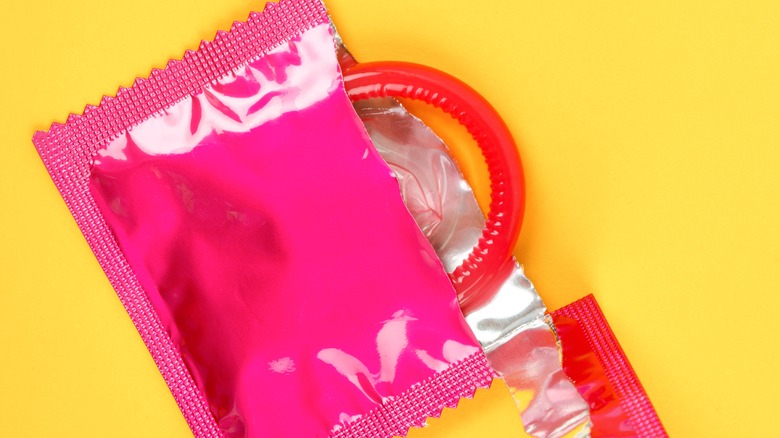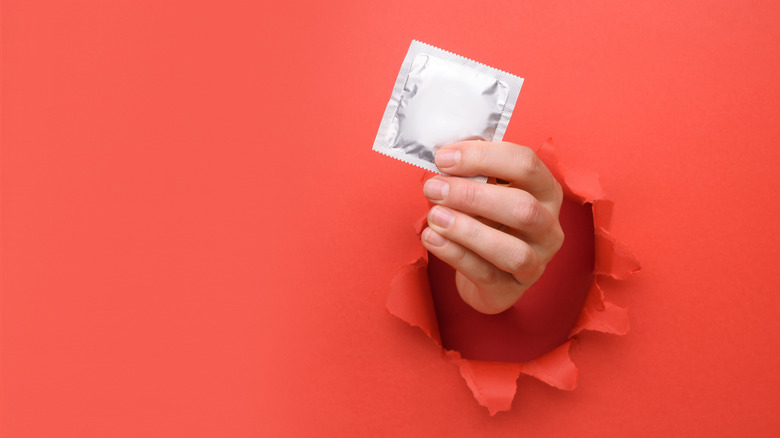What Happens If You Use An Expired Condom?
Engaging in safe sex practices is a responsible act to protect you and your partners from unwanted pregnancy and sexually transmitted infections, or STIs. There are a number of options for birth control. However, most condoms, and only condoms, offer protection against both pregnancy and STIs (via Healthline). Condoms are also typically more accessible, being more affordable and sometimes offered for free at places like Planned Parenthood. If you've been carrying that condom around in your purse, wallet, or car, you may want to take a closer look before slipping into this convenient contraceptive.
If you flip the bottom of the condom box or look on the back of the wrapper, you'll likely see a series of numbers that represent a date of expiration. That's right, condoms can and do expire. But the expiration date isn't the only concern. Sometimes, they can be "expired" before reaching their expiration date (via National Coalition for Sexual Health).
How material affects a condom's shelf life
Condoms are typically made from one of three different types of materials: latex and polyurethane, polyisoprene, or natural (non-latex) condoms. Each condom type has a different shelf life, though the storage directions for all are fairly similar (via Healthline). Regardless of the materials, all condoms should be stored in a cool, dry, place away from UV lights (via Nemours Children's Health). For natural (non-latex) condoms, the storage life is rather short, with most becoming expired only 1 year after the manufacturing date. It's also important to note that natural condoms do not protect against STIs, even when unexpired. Polyisoprene condoms can be stored for up to 3 years. Latex and polyurethane condoms have the longest shelf life — 5 years with proper storage.
Storing a condom in a pocket, wallet, glove box, purse, or backpack is not recommended, as the jostling and constant movement can lead to degradation in the form of rips and tears (via Healthline). Other factors that impact the effectiveness of condoms include temperature and spermicides. According to Healthline, condoms with spermicides lose efficacy after about 2 years of storage life. Heat and sunlight can cause the condom material to dry out. Signs of an expired condom, or one you shouldn't use, include: being past the expiration date, having visible holes or tears, smelling bad, or feeling dry or brittle upon opening.
Can you still use an expired condom?
But what happens if you use an expired condom? While the effectiveness against pregnancy and STIs is significantly reduced, an expired condom doesn't pose an additional risk to the user's health. According to Healthline, using an expired condom is better than no protection at all. An unexpired condom, when used perfectly, will have around a 98% effectiveness rate against pregnancy, STDs, and STIs. An expired condom, even in visibly good condition and stored properly, can be dramatically less effective (via National Coalition for Sexual Health). Planned Parenthood suggests that those who have had sex with an expired condom use a backup method to prevent pregnancy, such as an emergency contraceptive. Additionally, condoms with holes or tears are less likely to provide adequate protection. Be sure to visually inspect your condoms, expired or not, prior to use.
So while using an expired condom won't kill you — and it's better than no condom at all — it's important to ensure that you are keeping your contraceptive stash rotating. Check the expiration dates regularly, and discard all expired or damaged condoms.



